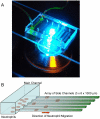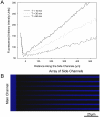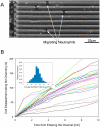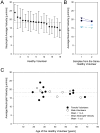Burn injury reduces neutrophil directional migration speed in microfluidic devices
- PMID: 20689600
- PMCID: PMC2912851
- DOI: 10.1371/journal.pone.0011921
Burn injury reduces neutrophil directional migration speed in microfluidic devices
Abstract
Thermal injury triggers a fulminant inflammatory cascade that heralds shock, end-organ failure, and ultimately sepsis and death. Emerging evidence points to a critical role for the innate immune system, and several studies had documented concurrent impairment in neutrophil chemotaxis with these post-burn inflammatory changes. While a few studies suggest that a link between neutrophil motility and patient mortality might exist, so far, cumbersome assays have prohibited exploration of the prognostic and diagnostic significance of chemotaxis after burn injury. To address this need, we developed a microfluidic device that is simple to operate and allows for precise and robust measurements of chemotaxis speed and persistence characteristics at single-cell resolution. Using this assay, we established a reference set of migration speed values for neutrophils from healthy subjects. Comparisons with samples from burn patients revealed impaired directional migration speed starting as early as 24 hours after burn injury, reaching a minimum at 72-120 hours, correlated to the size of the burn injury and potentially serving as an early indicator for concurrent infections. Further characterization of neutrophil chemotaxis using this new assay may have important diagnostic implications not only for burn patients but also for patients afflicted by other diseases that compromise neutrophil functions.
Conflict of interest statement
Figures







References
-
- White CE, Renz EM. Advances in surgical care: management of severe burn injury. Crit Care Med. 2008;36(7) Suppl:S318–324. - PubMed
-
- Salinas J, Drew G, Gallagher J, Cancio LC, Wolf SE, et al. Closed-loop and decision-assist resuscitation of burn patients. J Trauma. 2008;64(4) Suppl:S321–332. - PubMed
-
- Saffle JI. The phenomenon of "fluid creep" in acute burn resuscitation. J Burn Care Res. 2007;28(3):382–395. - PubMed
-
- Ipaktchi K, Arbabi S. Advances in burn critical care. Crit Care Med. 2006;34(9) Suppl:S239–244. - PubMed
-
- Ong YS, Samuel M, Song C. Meta-analysis of early excision of burns. Burns. 2006;32(2):145–150. - PubMed
Publication types
MeSH terms
Grants and funding
LinkOut - more resources
Full Text Sources
Other Literature Sources
Medical

